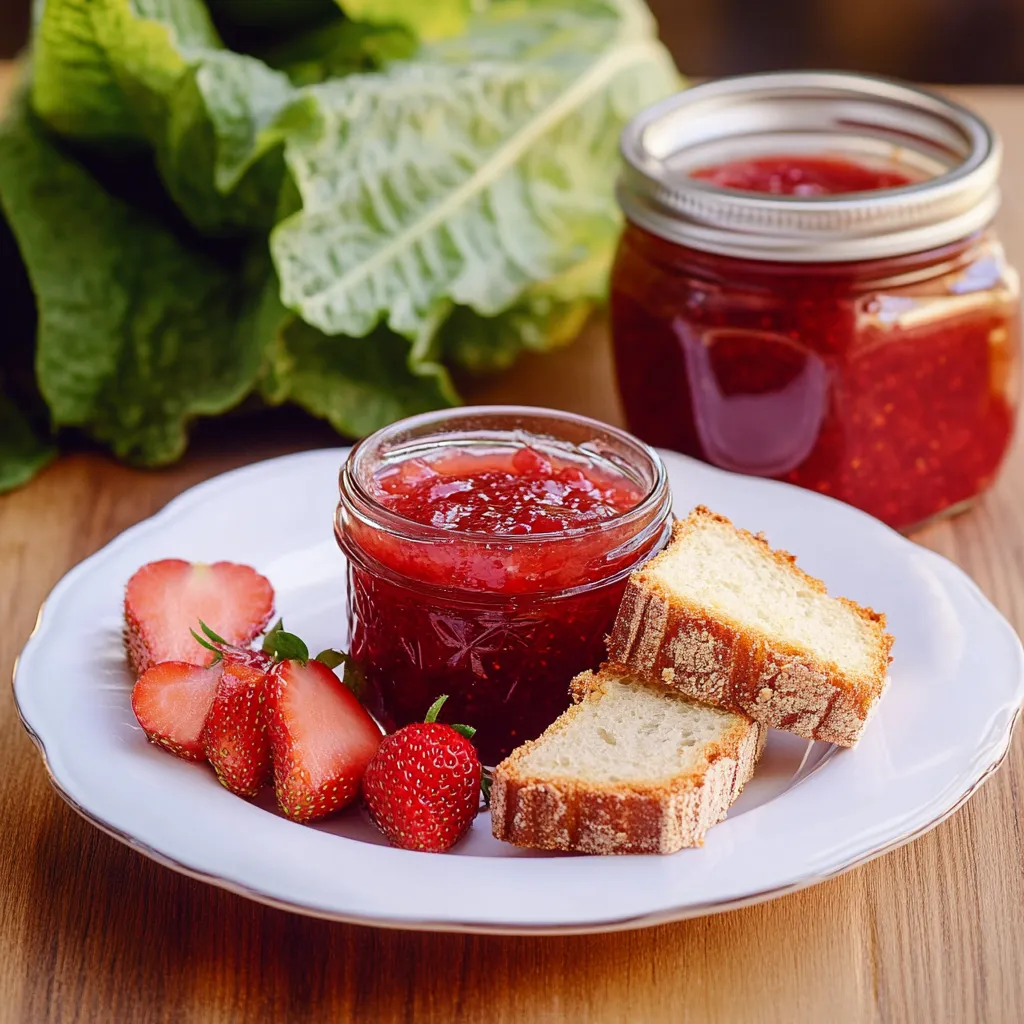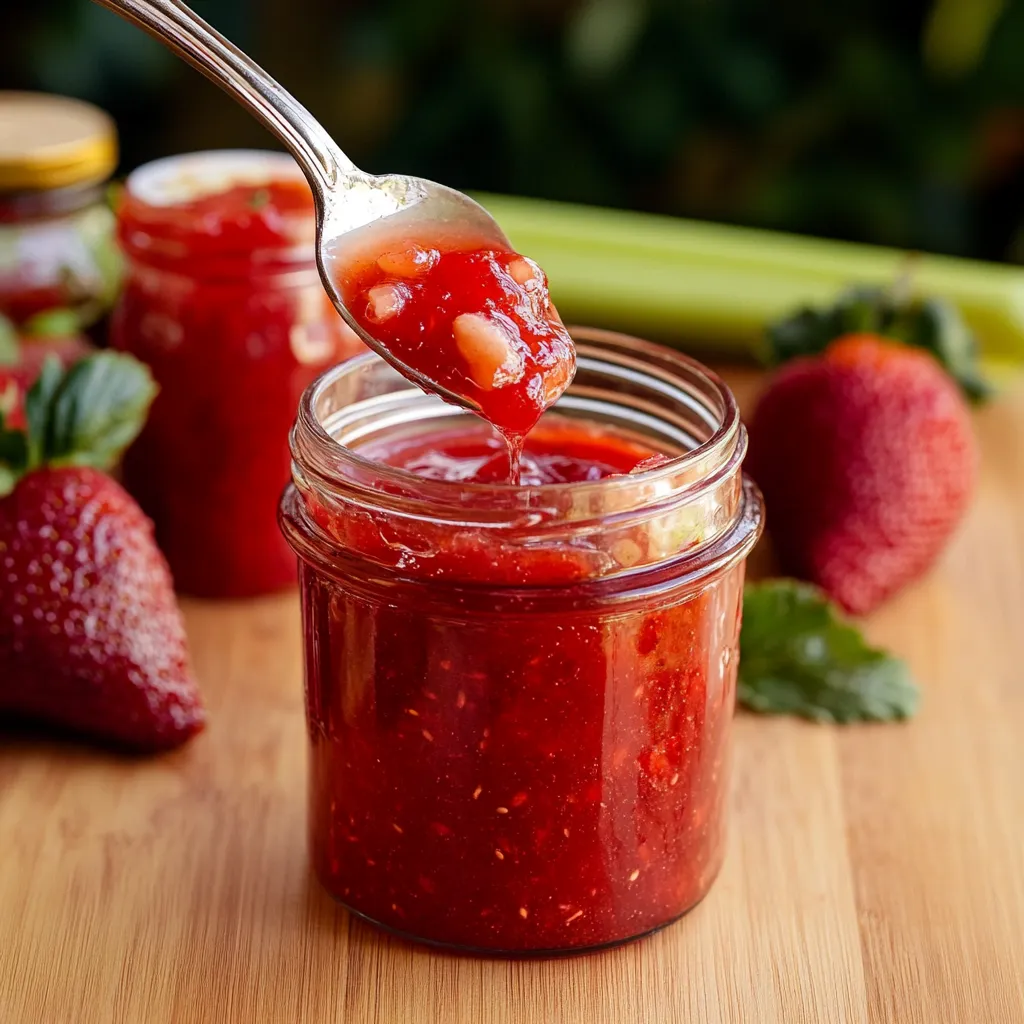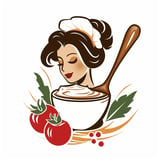 Bookmark
Bookmark
This strawberry rhubarb jam celebrates the perfect marriage between sweet summer berries and tart spring rhubarb. The ruby-red spread captures that fleeting moment when both are in season, creating a versatile preserve that brightens everything from morning toast to desserts year-round.
I first made this jam when my neighbor shared an abundance of rhubarb from her garden. The combination was so perfectly balanced that it's become my signature preserve, requested by friends and family every spring.
Ingredients
- Strawberries Fresh berries provide natural sweetness and pectin. Choose ripe but firm berries with vibrant color for best flavor.
- Rhubarb The tart counterpoint that makes this jam special. Look for crisp stalks with bright color and no wilting.
- Sugar Helps preserve the fruit while balancing rhubarb's tartness. Adjust quantity based on your preference and fruit sweetness.
- Lemon juice Acts as a natural preservative and brightens flavors. Always use fresh for best results.
- Lemon zest Adds complexity and intensifies the fruit flavors. Optional but recommended.
Step-by-Step Instructions
- Prepare the Fruit
- Thoroughly wash strawberries and rhubarb. Hull and chop strawberries into small pieces, keeping some chunks for texture. Trim rhubarb ends and dice into half-inch pieces. The consistent sizing ensures even cooking.
- Macerate
- Combine chopped fruit with sugar in a large, heavy-bottomed pot. Let stand for 15 minutes. This process draws moisture from the fruit and begins dissolving the sugar, creating the base for your jam.
- Cook the Mixture
- Place pot over medium-high heat and bring to a rolling boil, stirring frequently with a wooden spoon to prevent scorching. The mixture will foam considerably at first, then gradually reduce.
- Simmer and Reduce
- Lower heat to maintain a gentle simmer. Cook for 25-35 minutes, stirring occasionally to prevent sticking. The jam will darken and thicken as moisture evaporates. This slow reduction concentrates flavors and natural pectin.
- Test for Doneness
- Place a small plate in the freezer before you begin cooking. To test jam consistency, drop a small spoonful onto the cold plate and return to freezer for one minute. Run your finger through the jam. If it wrinkles slightly and doesn't immediately run back together, it's ready.
- Finish with Acid
- Remove from heat and stir in fresh lemon juice and zest if using. The acid balances sweetness and helps with preservation. Stir thoroughly to distribute.
- Jar and Store
- Ladle hot jam into sterilized jars leaving ¼-inch headspace if canning, or allow to cool before transferring to containers for refrigerator storage.
 Bookmark
Bookmark
The secret to this jam's success is the balance between varieties. I once made it with all supermarket berries in winter and while good, it couldn't compare to the version with sun-ripened local strawberries and garden rhubarb. The difference in flavor was remarkable.
Seasonal Timing
This jam celebrates the magical window when late spring rhubarb overlaps with early summer strawberries. In most regions, this occurs between May and June. For the absolute best flavor, wait until local strawberries are at peak ripeness, which often coincides perfectly with rhubarb season. If you grow your own rhubarb, harvest stalks when they're young and tender for best texture in your jam.
Storage Options
Refrigerator Jam Cooled jam will keep in airtight containers in the refrigerator for up to 3 weeks. The high sugar content acts as a preservative, but always check for signs of spoilage before using.
Freezer Preservation For longer storage without canning, allow jam to cool completely, then transfer to freezer-safe containers leaving ½-inch headspace for expansion. Frozen jam maintains quality for up to 6 months.
Water Bath Canning For shelf-stable preservation, process filled jars in a boiling water bath for 10 minutes adjusting for altitude if necessary. Properly sealed jars will keep in a cool, dark place for up to 12 months.
Serving Suggestions
Beyond the classic toast and biscuit applications, this vibrant jam elevates both sweet and savory dishes. Swirl a spoonful into plain yogurt or oatmeal for breakfast. Use as filling between cake layers or thumbprint cookies. For savory applications, this jam makes an exceptional glaze for pork tenderloin or chicken when mixed with a touch of balsamic vinegar and brushed on during the final cooking minutes.
Recipe FAQs
- → How do I know when my strawberry rhubarb jam is done cooking?
Test the jam by placing a small amount on a cold plate (kept in the freezer). Push your finger through the jam - if it wrinkles and doesn't immediately flow back together, it's ready. Alternatively, use a candy thermometer to check for 220°F (105°C), the setting point for jam.
- → Can I reduce the amount of sugar in this jam?
Yes, you can reduce the sugar to 2 cups for a more tart flavor, as noted in the ingredients. However, keep in mind that sugar acts as a preservative and helps with setting, so reducing it too much may affect shelf life and consistency.
- → How long will homemade strawberry rhubarb jam last?
Properly sealed in sterilized jars using water bath canning, the jam can last up to 1 year in a cool, dark place. Once opened, refrigerate and use within 2-3 weeks. If not canned, refrigerate immediately and use within 2-3 weeks.
- → Can I freeze strawberry rhubarb jam instead of canning it?
Yes! Allow the jam to cool completely, then transfer to freezer-safe containers leaving 1/2 inch headspace for expansion. Frozen jam will maintain quality for up to 6 months. Thaw in the refrigerator before using.
- → Why is my strawberry rhubarb jam runny?
Runny jam usually means it didn't reach the proper setting temperature or didn't cook long enough. Both strawberries and rhubarb are relatively low in pectin. For a firmer set, you can add commercial pectin, cook the jam longer, or include more lemon juice which contains natural pectin.
- → What's the best way to use strawberry rhubarb jam?
Beyond spreading on toast, biscuits, or scones, try it as a filling for thumbprint cookies or layer cakes, swirl into oatmeal or yogurt, use as an ice cream topping, or spoon over cheesecake. It also makes a lovely glaze for roasted meats when mixed with a bit of vinegar and spices.
